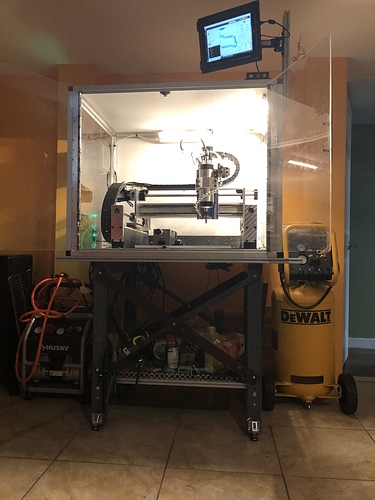Dynamat may help with some aspects but be careful which type you use. Just adding mass to the system may not provide the results we want.
The popular Dynamat (and similar other vendor products) are designed as constrained layer damping materials to deal with vibration energy in relatively stiff metal panels. The idea is that the metal skin on the mat and the metal panel of the vehicle form the sandwich for the deformable layer of goop. The goop goes into a shear mode as the panels flex and converts the sound energy to heat. This is very effective, if you have a thin metal panel which is flexing sufficiently to move the goop into it’s shear mode where it converts stress to heat and out of it’s nominal elastic mode. It’s hard to get this right and using a material designed for thin metal panels in vehicles on a sheetrock, plywood, MDF etc. wall is unlikely to work.
The common ‘knockoff’ clones which are just a heavy rubbery or bitumen material generally only serve to reduce the resonant frequencies of panels they’re attached to by increasing the mass without increasing stiffness, thus their use inside speaker cabinets to move midrange resonances to less objectionable octaves.
The multi-layer dense foams can work like the dense rockwool in terms of reducing transmission of noise, they’re also pretty good at reducing reflection of higher frequency noise.
Different frequency ranges;
Dealing with different frequency ranges requires different approaches and a combination of absorbtion and decoupling is generally required to get good performance across the audible range.
At mid to high frequency (router noise, spindle whine etc.) relatively thin sound absorbers such as the Dynamat foams on the inside of an enclosure can be very effective. Many folks have built enclosures for their Shapeoko with acrylic windows to view through and these still disrupt the high frequency elements quite effectively.
This is because short wavelength sounds are much easier to absorb and disrupt. That’s why when you close a door or go downstairs from the party you’re left with the thump thump thump, bass just wafts through most things due to longer wavelengths and reduced absorbtion efficiency. Bass sees wooden floors and joists as a propagation path, not a barrier.
Once we get to lower frequencies and longer wavelengths mechanical transmission becomes the issue. You could fill the enclosure with absorbing dense foams and the people downstairs would hear the axis moves and low frequency elements of the cutting noise perfectly because the sound is transmitted through the feet of the Shapeoko to the table, through the legs to the floor etc.
To deal with these lower frequency elements we need to find a way to stop the low frequency energy propagating from the machine to the walls, floor etc. There’s two parts to this, direct noise conduction through the frame and sound passing through walls etc.
Low frequency sound is normally mitigated by decoupling, which works best when a flexible coupling is carefully tuned between the two masses to not pass the problem frequency range.
We’re not really in a position to calculate this so what we need is something rubbery which will support the machine effectively but flex in the low frequency range rather than passing vibration to the floor. There are assorted anti-vibration feet and similar products out there, the key is flexible couplings between masses.
As for walls, there’s lots of stuff out there but fundamentally, the things that work in lower frequencies are decoupling, not absorbing, split stud is popular as it’s not much more space than a regular stud wall.
The key thing is to deal with the noise as close to source as possible so an enclosure around the Shapeoko, maybe double-skinned (without battens linking the skins across their faces to reduce transmission) and fill the cavity with Dynamat foam absorber etc. (not the aluminium constrained layer materials) would work for the higher frequency sounds. Next up, isolate the low frequency noise, vibration isolating feet under the shapeoko are an option but require some experimentation to not add lots of harmful vibration to the Shapeoko frame. Sound isolating feet between the table and the floor are likely the best option and I’d be tempted to use a few concrete paving slabs on the floor as the resting point for the vibration isolating feet.
You could also do a double table top with a small torsion box for the Shapeoko to sit on which itself sits on a layer of the foamy floor insulating Dynamat on top of the lower table top which is attached to the legs. Not sure how well this would work, depends on the effective tuning of the mass and the springiness of the foams but I’ve done this type of isolating for noisy air conditioning units to good effect.
HTH

